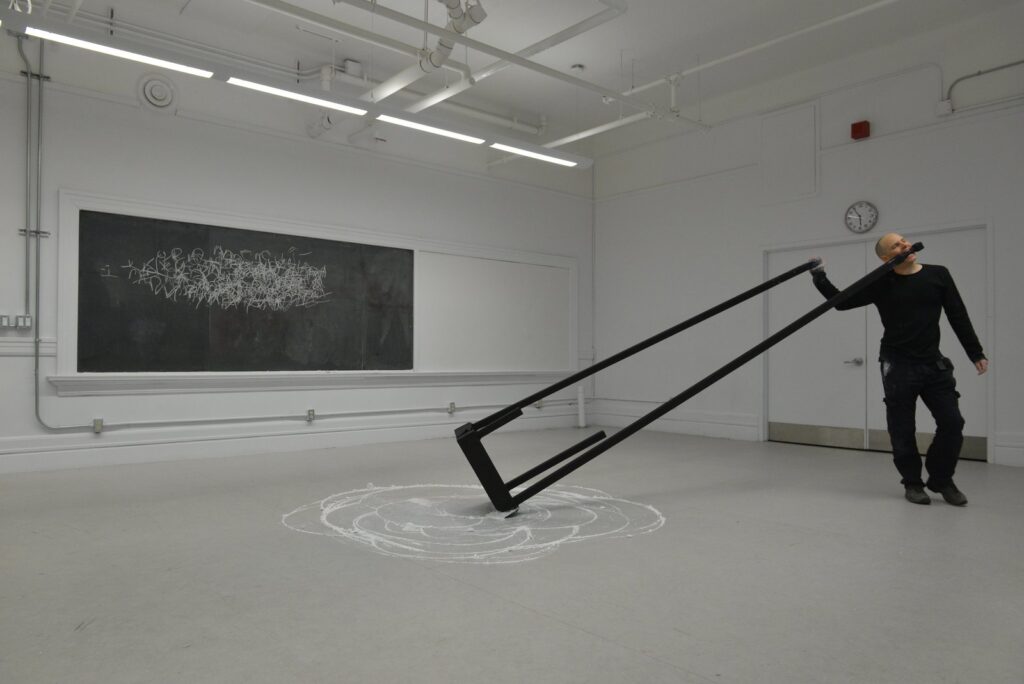By Alison Cooley

An accumulation of chalk on the floor, an accumulation of marks on the chalkboard, an accumulation of blisters around the performer’s mouth, an accumulation of time in his stride, an accumulation of dust in the lungs.
London-born, Finland-based John Court’s performance builds in steady accumulations. Piloting a long, irregular stool-like construction, one uneven limb between his teeth and the other, slightly shorter, in his hand, Court walks paced circles around the studio. The seat of the stool-like construction takes on a compass-like shoveling function, pushing a pile of white chalk dust into circular grooves as the artist maintains his trajectory. In a rhythmic progression, Court uses his free hand on every pass to make a chalk mark upon the studio’s chalkboard.
At first, Court’s circles are slow, weighted. His grimace and averted eyes are difficult, even painful to witness. Sometimes the chalkboard is just outside of his reach, and Court flails in an attempt at drawing. The marks accumulate, chart a mass at roughly shoulder level.

Over the course of Court’s 6-hour durational work, his pace quickens, sometimes slows. His tired body makes desperate marks and lunges for the chalkboard, his stool-shovel shifts abruptly. His floor circles widen and condense, chalk snaps, screeches across the board. By 8 p.m., two hours before his performance is slated to end, Court has abandoned his mark-making on the chalkboard. The chalk dust, once dense and clumped, thins out, ground into a fine powder which leaves streaks between the grooves on the floor. The hockey tape wound around the base of the stool has begun to unravel, and trail through the chalk. Court’s sleeves and his pocket are populated with chalky handprints, a catalogue of his own touch.
In the context of Artscape Youngplace, a repurposed elementary school, Court’s endurance of the marks of schooling upon his body, and upon his measurement of time, resonate with the architectural realities of the site. The studio is recognizable as a former classroom, and although the building has been re-painted and outfitted with a cafe, it undeniably retains the imposing aura of a school structure. The institutional policing of behaviour and grooming of manners or social graces (the primary socializing functions of schooling) exact minor and progressive violences upon Court’s body. Court’s chalk circles evoke the disciplinarian practice of punishing unruly students by forcing them to keep their noses inside a chalk circle on the board, his stool echoes a “time out” station, a taped binding looks noticeably strap-like.

And despite the brutal nature of the accumulation of marks upon the floor, the chalkboard, and Court’s own body, the performance is also highly studied. The simple formalism of his uneven (and the occasional strikingly even) white circles on the grey floor, the mass of the scribbled drawing on the board, Court’s own contrasted black and white figure— all betray an exactitude nearing scholarship. Court’s repeating motions are caught in between stringent self-punishment and immaculate technical and artistic calculation.
